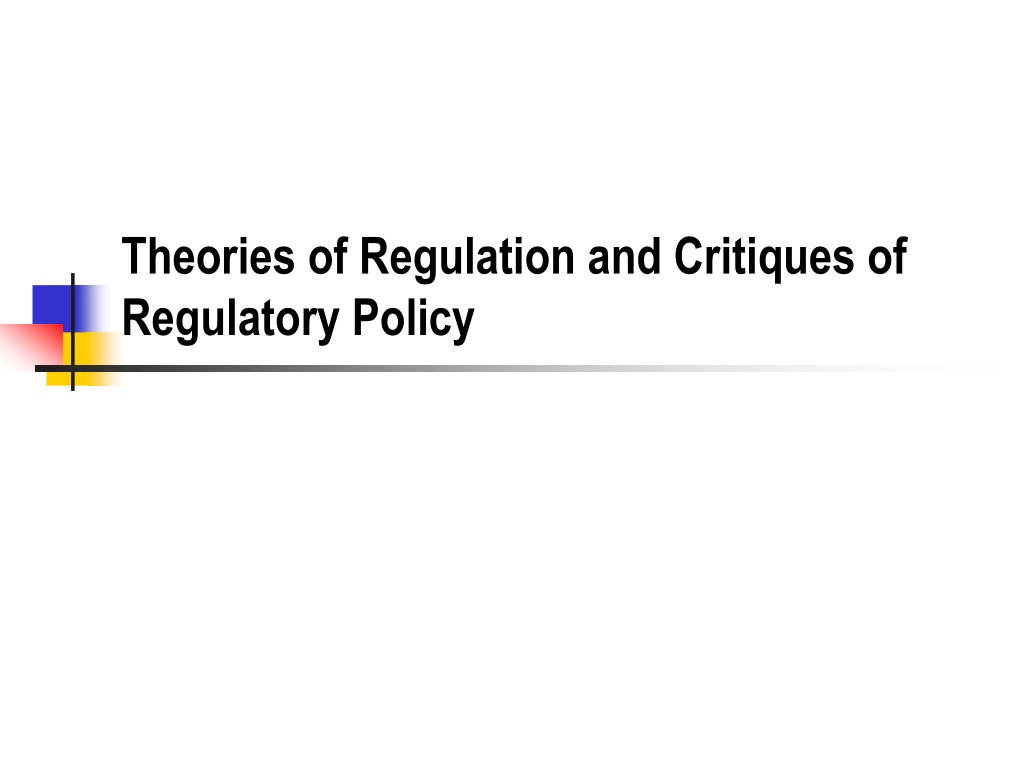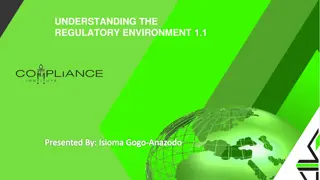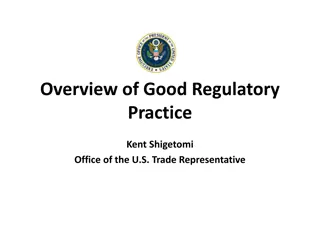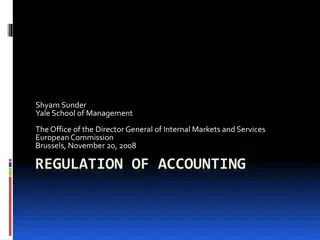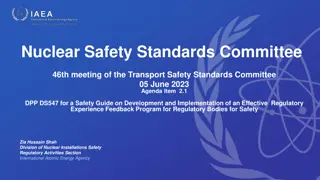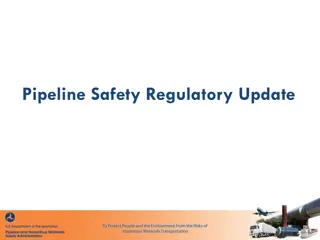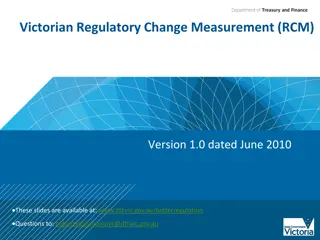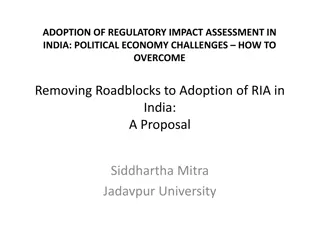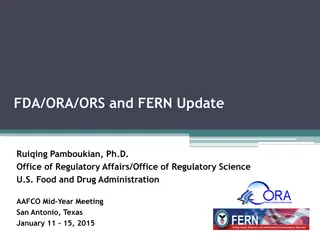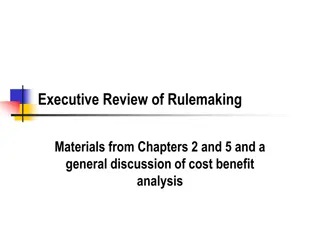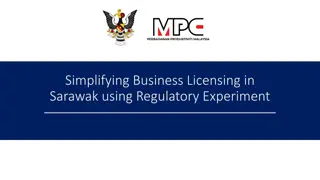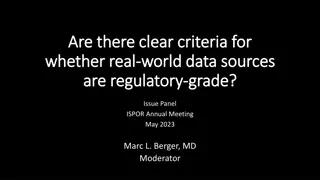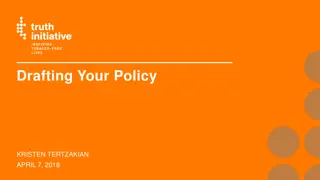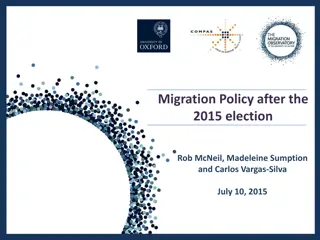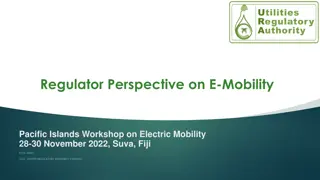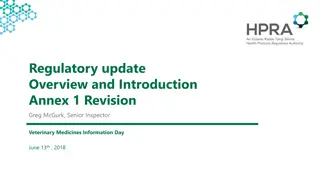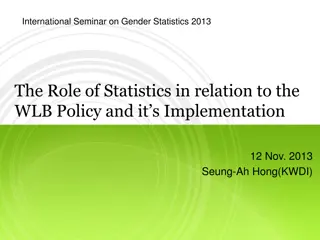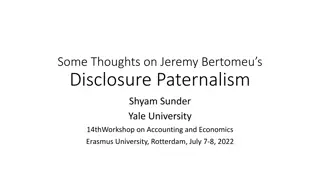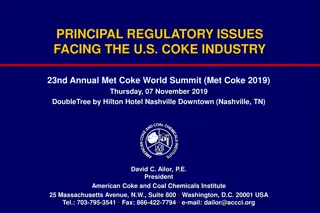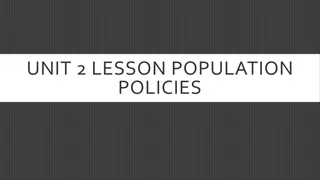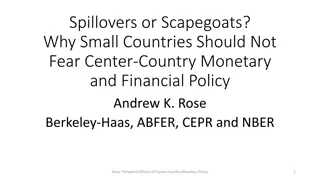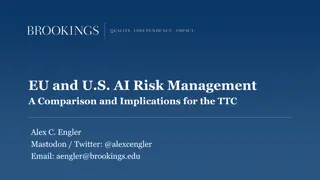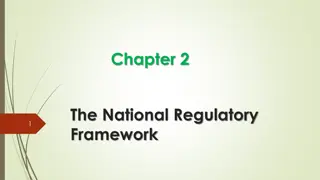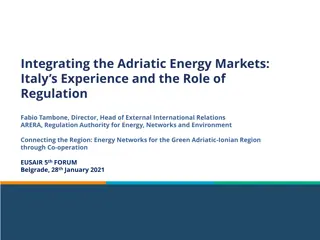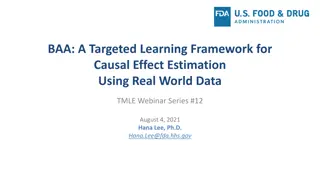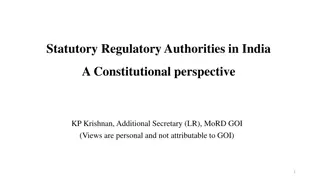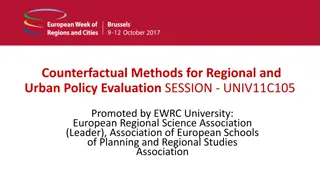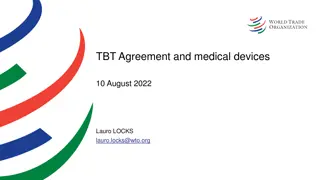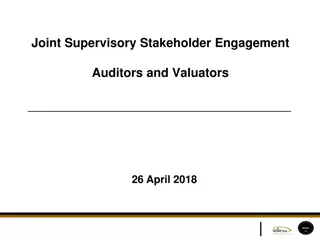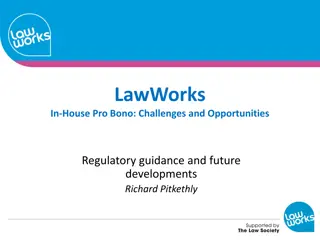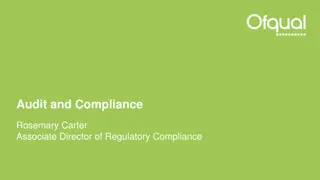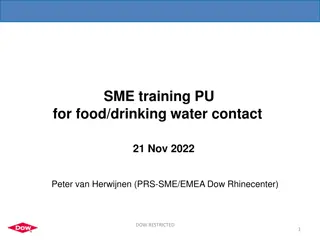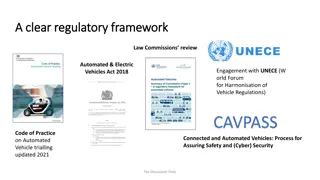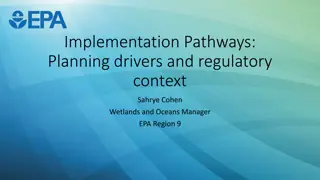Insights into Regulatory Policies and Impact
Explore theories of regulation, critiques of regulatory policy, regulatory successes in public health and banking, criminal law as regulation, economic theories of regulation, and more. Consider the internalization of costs, correction of informational and bargaining asymmetries, optimization and protection of the state, and the costs in cost-benefit analysis.
Download Presentation

Please find below an Image/Link to download the presentation.
The content on the website is provided AS IS for your information and personal use only. It may not be sold, licensed, or shared on other websites without obtaining consent from the author. Download presentation by click this link. If you encounter any issues during the download, it is possible that the publisher has removed the file from their server.
E N D
Presentation Transcript
Theories of Regulation and Critiques of Regulatory Policy
Regulatory Successes Public health - Life expectancy from 25 to nearly 80. Food and drug safety - compared to 1900 Environmental regulation Workplace safety Civil rights Banking Lots of moral hazard problems, which blew up in 2008 No one lost insured deposits Lots of folks lost retirement savings that were in the market and shadow banks. 2
Criminal Law as Regulation Moral/natural law standards for crimes Traditional crimes such as murder Politically driven criminal law and penalties Driven by political winds and stories in the news. Usually about increasing penalties and criminalizing something that is already illegal. Criminal law is almost never rationally evaluated as to effectiveness or cost. 3
Internalization of Costs The market cannot work efficiently if businesses can escape the full costs of their activities. Dumping untreated waste into a river lowers the cost of doing business by the cost of treating the waste. This cost is shifted to the public and downstream water users. If a business has to internalize all the costs, it will have an incentive to be more efficient. 5
Correction of Informational and Bargaining Asymmetries. Market regulation can only work if the buyers products and services have: Adequate information; The ability to evaluate that information; and Bargaining power. FDA Department of Agriculture Regulation of professional practice 6
Optimization and Protection of the State Protection of the state itself National security Protection of the populace so they can be more effective participants in the state. Free public education Public health Social welfare as necessary for social stability and an optimal workforce. 7
The Costs in Cost Benefit Analysis There is general agreement that the benefit of regulation should outweigh the costs. Costs to the regulated party are generally easy to determine. They are incurred upfront. They are usually already monetized. They are generally incurred by the regulated party. 8
The Benefits Benefits are usually incurred by the public in general, or by specific subsets, but generally not by the regulated party. Benefits are usually incurred over a long period of time. Benefits are generally not directly monetized. 9
Avoidance of public costs as a benefit Many regulatory schemes, especially those involving public health, the benefits of the regulation are usually expressed in terms of foregone costs. Costs of medical care for avoided illnesses. Avoidance of lost days at work. Costs of premature death to the individual in the economy. 10
The costs of aesthetic injuries The most difficult costs to monetize are those from aesthetic injuries. How do you value the loss of national parkland? The value of the integral views in the Regulators? The ability to swim and fish in public waters? You can survey people and ask them what they pay to preserve these benefits, but this is not a very effective methodology. 11
Early regulatory benefits were clear. Removing sewage from rivers Eliminating dangerous building conditions Eliminating clear physical hazards in the workplace Preventing food from being contaminated with dangerous chemicals and bacteria 13
Statistical lives and health Most modern health and safety regulations depend on long-term statistical analysis to show benefits. These benefits can be large, but they are always invisible in the individual case. This is especially true when the benefit is the prevention of harm. 14
The public perception of risk The public, and most politicians, are unable to properly evaluate statistical risk. They are overly frightened of low-level risks: Toxic exposures Low-frequency incidents They are not properly appreciative of long-term cumulative risk. Smoking until fairly recently. Climate change. 15
Hard questions in assigning costs How much should we spend to save a life? Why does Congress refuse to put a price on human life? Why does this make CBA irrational? How much to prevent injury? How do we value injury and disability? What about regulation of dangerous personal behavior? What is the CBA for US drug policy? Smoking? 16
What is PBA? Political benefit analysis Why does it usually trump CBA? 17
PBA and Small Businesses Why do most regulations exempt small business? What is our mythology of small business? They provide new jobs, but most do not last Most are for owners of the business If you are an employee of a small business, do you want it exempted from OSHA? If you are a consumer, do you want small business exempted from regulation? 18
The Cumulative Effect Problem of Regulations Each rule is seen without reference to all the other regulations Thus each new safety rule may be cost effective, but the aggregate is not. Justice Breyer calls this the tunnel vision problem. This is a major rationale for OIRA 19
Where does CBA fail? What if the costs and benefits do not fall on the same group? Why does HHS and the state continue to favor high tech medicine over primary care? What is the disconnect between the costs and the benefits? Does good health even save the country money? Think about Social Security, Medicare, and pensions. What are the economics of death? What might a CBA analysis say? 20
Should we do CBA at All? Why not prevent all possible risks? Precautionary principle Does the US concern with risks affect our cost of business production? When can preventing one risk cause another? Levees Smaller, lighter cars Guns for personal protection at home 21
How Do We Make Political Choices? Response to a crisis Can work for specific narrow issues - FDA Tends to not consider unintended consequences Driven by lobbyists Works best for lobbyists when it is not publically vetted Think tax code Cost-Benefit analysis by legislators Almost never based on actual data 22
Could We Spend the Money More Wisely? What type of risks do we spend the most on with the least return? Asbestos abatement of stable asbestos in buildings Superfund risks Low frequency specific toxic exposures in general Is there an LA cancer corridor? What major risks get the least attention? Smoking cessation? Immunizations? Primary care? 23
Non-Agency Regulation: Tort and Compensation Law How is tort law a regulatory process? Is it a democratic process? What is the public input? Who protects the public's interest in tort cases? What are the standards for scientific decisionmaking? Breast implant litigation? Erin Brockovich and toxic hazards? Roundup? What are the standards for CBA in tort cases? What if later evidence shows that the verdict or settlement was wrong? 24
FDA What are the tradeoffs in FDA regulation? Safety/Effectiveness Should cost be part of the equation? Why are consumers in a poor position to judge drugs? Background Information? Timeframe of action? Comparative effectiveness? What is drug lag? Why not let the market sort it out? What is the market mechanism - think Vioxx 26
CBA - Federal Flood Insurance Why did the feds get into flood insurance? What should the private market failure have told us? How is flood insurance different from medical insurance? What are the political pressures on the feds? Do local communities really want accurate flood maps? Do people really want accurate storm probability predictions? Can the feds charge accurate premiums? What have been the unintended consequences of the program? 28
